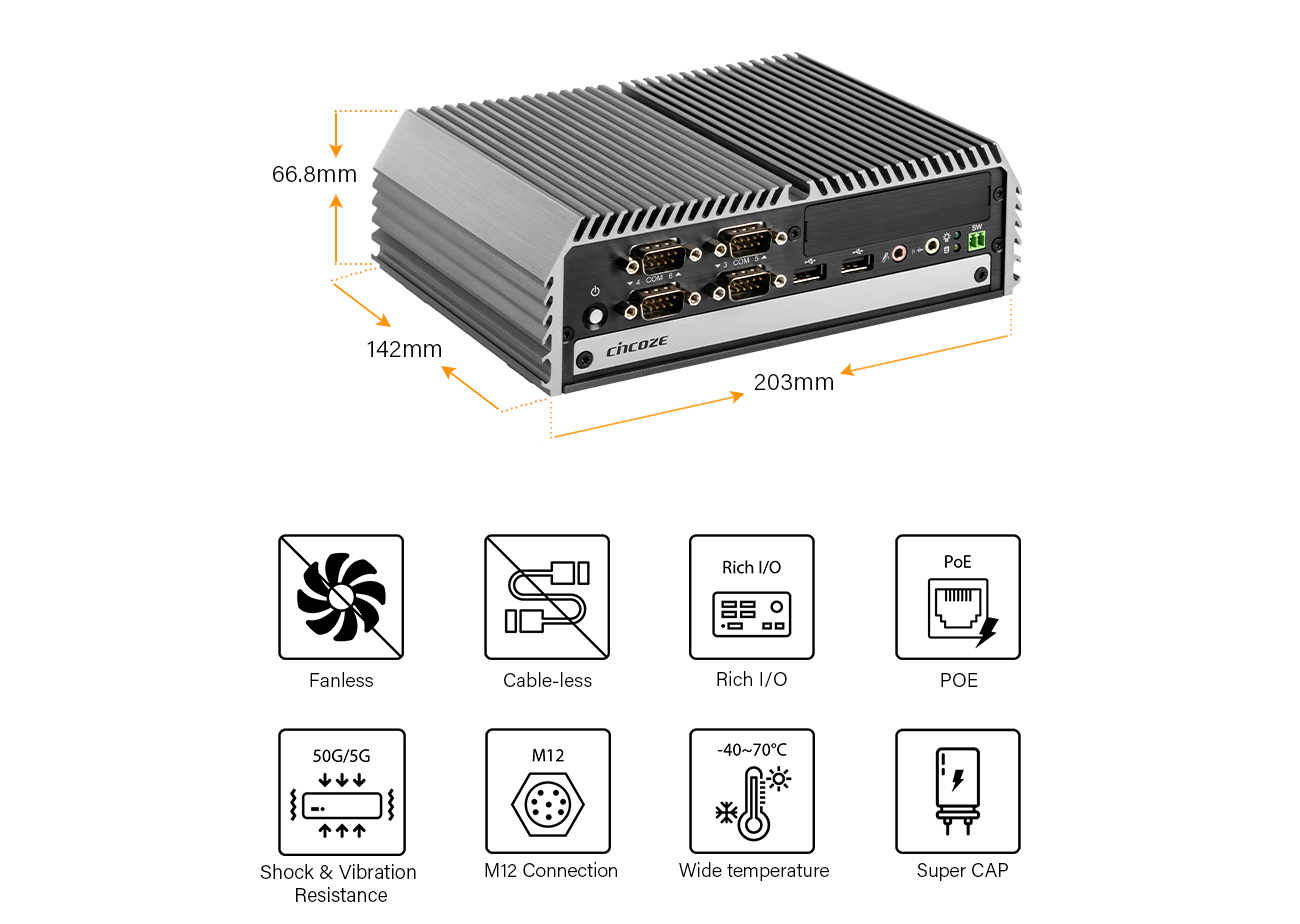60% Less Wait - How Cincoze DI-1000 Harnesses Machine Learning to Reduce Traffic Congestion

60% Less Wait - How Cincoze DI-1000 Harnesses
Machine Learning to Reduce Traffic Congestion
Introduction
Everyone likes to catch the green light.
Nobody likes to sit in traffic jams. However, beyond the general frustration of
endless waiting, transportation inefficiencies can seriously disadvantage a
city or country's economy and environment. According to INRIX's 2019 Global
Traffic Scorecard, the American Transportation Research Institute estimates
that the total cost of traffic congestion in the freight sector is as high as
$74.1 billion annually. But it's not just the economy that's affected.
Petroleum consumption, CO2 emissions, and climate change caused by traffic
congestion take a toll on our planet. Now, by leveraging new technology,
intelligent traffic management smooths and optimizes vehicle flow, getting
people and things to where they're going quicker than ever before.
Our customer, a research institute of environmental engineering in a European university, was tasked with this challenge when their city's Urban Congestion Commission called for improved traffic signal control to reduce congestion and travel time. The research institute developed its own algorithm and created a new method for managing signal-controlled intersections by adopting machine learning. Their strategy uses radar to detect and then predict the behavior of traffic. With the integration of machine learning, optimized traffic and control light timings reduce red lights when there is no oncoming traffic. An embedded PC solution was required for this application to process data and connect to the peripherals.
Customer's Requirements
The embedded PC connects to the radar,
collects traffic data, processes the data, then transmits it to the central
control room. To meet the roadside edge computing system’s requirements, the
embedded PC must have high-performance computing power in a small form factor
to permit installation in the small roadside cabinet.
Multiple LAN and I/O Connection
The embedded PC must connect to the traffic
management center. A network connection facilitates this communication, with
the control room analyzing the incoming data, and the embedded PC commanding
and controlling the traffic lights. Therefore, LAN, I/O connections, and
expansion are necessary.
Outdoor Conditions
A traffic system is a harsh installation
environment. The embedded PC must adapt to accommodate varying outdoor
application environments, including shock, vibration, and wide temperature
ranges, to ensure uninterrupted traffic service.
High Performance for the Edge
DI-1000 is a high-performance embedded PC
supporting Intel® Core™ mobile processors from Core™ i3-6100U up to the Core™
i7-6600U, and measuring only 203 x 142 x 66.8 mm. The high performance plus
small footprint makes the DI-1000 perfect for machine vision, in-vehicle, and
mobile surveillance applications.
Multiple Expansion Options
DI-1000 includes various I/O connections,
including DVI-I, DisplayPort, 2x LAN, 6x COM, 6x USB, 8x isolated optical DIO,
and remote power on/off switch. The unique Cincoze CMI and CFM technologies
allow DI-1000 expansion and upgrades with more I/O like LAN, PoE, M12
connections, and ignition sensing. These expansion modules provide ease of
maintenance while saving costs.
Ruggedness
DI-1000 inherits its rugged DNA from the
Cincoze DIAMOND series. It is fanless and cableless, operates in temperatures
from -40 to 70℃, supports wide range DC input from 9 to 48 VDC , has a high
tolerance for shock and vibration, has a high standard electric protection, and
uses a SuperCAP as a maintenance-free CMOS battery.
Improved traffic control has successfully reduced traffic congestion and traveling time. The DI-1000 has currently helped the traffic signal system deliver a 60% reduction in traffic queues during rush hours.



